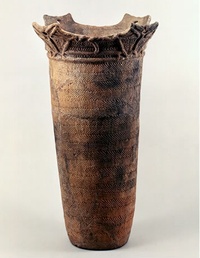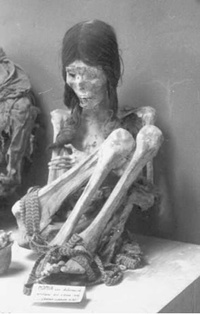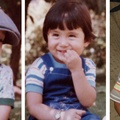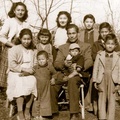When one sets out to trace back history with certain objectives in mind, evidence found here and there slowly begins to add up, taking form and giving support to certain suppositions of daring scholars who, in visionary fashion, create hypotheses bordering on fantasy. In this specific case, I'm referring to the presumed Japanese presence in Latin America long before the arrival of the European conquistadors.
In fact, they would have been in Brazil if we take into account records provided by the Jornal Nippo Brasil, dated April 20—26, 2000, in its report, "The Japanese were in Brazil before [Portuguese discoverer Pedro Álvares] Cabral."
What would appear to be an incontestable truth is that the origin of the first American settlers is Asian. In any history book we find these first groups of Asians of the Upper Paleolithic crossing the Bering Strait through an ice bridge that still existed because the deglaciation of the Northern Hemisphere, then in process, hadn't yet reached those high latitudes. This migration from Asian Siberia to the American Alaska occurred approximately 14,000 years ago. From then on, a slow movement southward began to take place all the way to Chile itself. To that can be added the accounts offered by the French ethnologist Paul Rivet in his book "The Origins of the American Man," published in 1943, in which he states that not all migrations were effected by land, as some took place by sea. This supposition continues to gain force. In a substantial Brazilian project of ethnic research, for instance, researcher Heinz Budweg affirms that across the ocean "the Japanese, Chinese and even Indians traveled constantly to South America between 2,000 and 3,000 B.C."
The Japanese who lived before Christ presumably arrived late on the American continent, but the traces that have been found demonstrating their presence have become increasingly more significant. Of these, here are a few examples:
1) Japanese vases of the Mid-Jomon period (1,600 B.C.), excavated at Napo, Ecuador.
2) The use of Japanese words for place names in the Americas. Here are two examples: "water" in Japanese is "mizu," and it would have served as the basis for naming the Missouri River. The name of Mount Suyama in Bolivia would be derived from "yama," which means "mountain."
3) At the end of the '70s, archeologist Charlotte Emerich lived with a tribe of the Upper Xingu, and was able to prove that they communicated by way of an ancient Japanese dialect.
4) In December 1999, a team of Japanese scientists led by Kazuo Yajima of the Center of Cancer Research of Nagoya discovered Chilean mummies, buried more than 1,500 years ago, that were infected with the HTLV-1 virus (a leukemia variant), which is particular to certain regions of Japan and a few other spots in Asia. (The Chilean mummy -- "Miss Chile" -- infected with the virus can be found at the Museo San Pedro de Atacama in Arica.)
5) The Brazilian researcher Luiz Caldas Tibiriça, who has been studying for more than 40 years the linguistic similarities among indigenous Brazilian dialects influenced by Japanese, claims to have found more than 2,000 related expressions. According to his research, here are a few examples comparing Tupi (to the left) with Japanese (to the right): ay-ssó/ai-sö = pretty, delicate; a-nhó/an-non = peace, calm; amä/ame = rain; arassy/arashi = bad weather, storm; mirä/mirai = future; coty/kotchi = next to, this side; mé-mé/mai-mai = always.
Questions arose shortly after the appearance of these quite astonishing studies and theories. The most persistent question would be, "How were they able to cross the Pacific Ocean?" According to certain myths, they were familiar with ocean currents that could not only bring them here, but also take them back. (Remember the ocean currents used by the Norwegian Thor Heyerdahl's Kon-Tiki expedition in 1947?) A Japanese myth that we grew up with and that mentions Chile talks about one of those possible currents. Additionally, the story brings to light a number of geographical names that remain in use, as well as the possible realization of a dream that may have given grounds for genetic and cultural influences over the Amerindian peoples:
"It is said that the oldest son of a great Japanese lord, obsessed with a prophecy foretelling that he was destined to be the founder of an empire across the ocean, set sail, accompanied by several faithful followers, around the year 1,100 B.C. The ocean current 'kuro-shiö' brought them to a beach they called 'Arika' (Arica), which can be translated as 'here it is.' Later, they traveled south while looking for the promised land, but they came to a halt at "Asaban" ("morning and night" – Azapa [in Spanish] to us) after surmising that they were on the wrong track. They retraced their steps and traveled northwest from the 'Yutoo' (Lluta) River, which means 'something better' or 'better than the other.' They crossed desert and mountain ranges, finally arriving at a great lake they called 'Chichi-haha' ('Dad and Mom' -- Lake Titicaca), which was supposed to have been the divine sign that would lead them down the final route to the place where the prophecy would be fulfilled."
© 2008 Ariel Takeda







